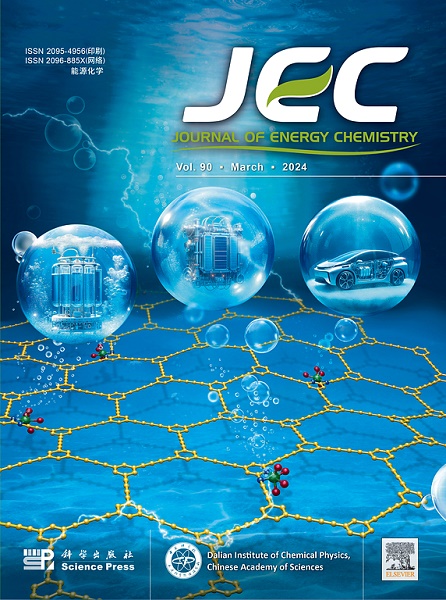Supramolecular interaction chemistry in polymer electrolytes towards stable lithium metal batteries
IF 13.1
1区 化学
Q1 Energy
引用次数: 0
Abstract
Developing advanced polymer electrolytes in lithium metal batteries (LMBs) has gained significant attention because of their inherent safety advantages over liquid electrolytes, while still encountering great challenges in mitigating uneven lithium plating/stripping and dendrite growth. Previous efforts primarily focused on passive approaches to mechanically constrain lithium dendrite growth. Recent studies have revealed the significance and effectiveness of regulating supramolecular interactions between polymer chains and other electrolyte components for homogenizing lithium deposition and enhancing the interfacial stability. This report provides a timely critical review to cover recent inspiring advancements in this direction. We first summarize the origins of supramolecular interaction origins, strength-determining factors, and structure–property relationships to establish quantitative correlations between polymer composition and supramolecular interaction properties. Then the recent advances in regulating supramolecular interaction chemistry are comprehensively discussed, focusing on those towards accelerated mass transport and stabilized anode-electrolyte interface. Finally, the remaining challenges are highlighted, and potential future directions in supramolecular interaction regulation of polymer electrolytes are prospected for the practical application of LMBs.

求助全文
约1分钟内获得全文
求助全文
来源期刊

Journal of Energy Chemistry
CHEMISTRY, APPLIED-CHEMISTRY, PHYSICAL
CiteScore
19.10
自引率
8.40%
发文量
3631
审稿时长
15 days
期刊介绍:
The Journal of Energy Chemistry, the official publication of Science Press and the Dalian Institute of Chemical Physics, Chinese Academy of Sciences, serves as a platform for reporting creative research and innovative applications in energy chemistry. It mainly reports on creative researches and innovative applications of chemical conversions of fossil energy, carbon dioxide, electrochemical energy and hydrogen energy, as well as the conversions of biomass and solar energy related with chemical issues to promote academic exchanges in the field of energy chemistry and to accelerate the exploration, research and development of energy science and technologies.
This journal focuses on original research papers covering various topics within energy chemistry worldwide, including:
Optimized utilization of fossil energy
Hydrogen energy
Conversion and storage of electrochemical energy
Capture, storage, and chemical conversion of carbon dioxide
Materials and nanotechnologies for energy conversion and storage
Chemistry in biomass conversion
Chemistry in the utilization of solar energy
 求助内容:
求助内容: 应助结果提醒方式:
应助结果提醒方式:


